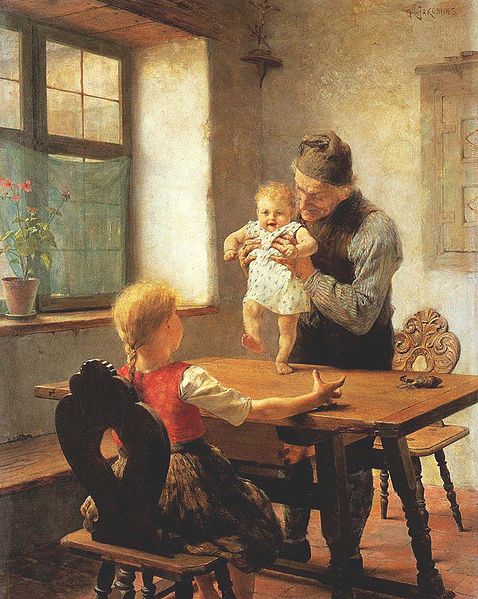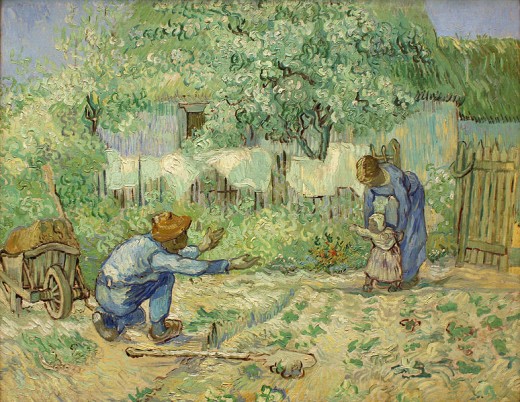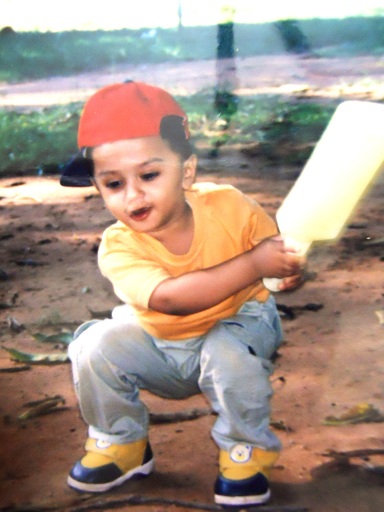Teaching toddlers - tools for teaching toddlers
Teaching toddlers - Being their first teacher
Toddlers are constantly learning, they absorb all that happens in the environment. The more they are stimulated mentally, emotionally and physically the more they learn. A child who is left alone withdraws to himself/herself and does not interact much with the environment. Toddlers learn to manage their environment thus acquiring enough skills to have his/her needs met, sometimes even demanding that their needs be met. The important skills that toddlers acquire at this stage in life can be grouped into physical, social, emotional and cognitive skills that help the child through life. Parents and family play a major role in the learning of a toddler. I would also like to emphasize that teaching toddlers is easy and the most rewarding of all teaching jobs. Though there are theories that would consider that babies are like clean slates and they absorb every thing, the fact is, they learn more from meaningful interactions.

Enriching your toddlers social skills - the tools you need
There is no necessity for special tools to teach your toddler. A toddler is getting accustomed to his/her environment and is learning to adapt, exploratory play is the most important activity at this age. It would help you as a parent to take your child around the house naming and making a game of each object you find. This helps increase vocabulary and increases spatial learning. Taking the child out into the yard or playing camping in your backyard could teach the child a lot more than you believe it would. A tour of the garden, teaching a child to appreciate nature, watching birds and small garden animals could help your child learn, see and feel what he or she is learning. Involving all the senses is the best way of teaching children effectively. A tour of the neighbourhood, library, church, shops etc would introduce the world to the child in a nice and secure way. Your tour could have stops at a cafe’ from where you could watch vehicles or a visit to the mechanic shop would be a great idea. I believe a child has to see, feel, smell, hear and sometimes taste the things that he/she is learning about. A few colorful and differently shaped number blocks, alphabet blocks, some basic shapes, puzzles and the like is enough for a toddler.
Toddlers learn social skills like language or emotive skills with parents and others. It is easy for parents to use baby language to speak to their toddlers but at this age when they are developing their speech skills it would help to pronounce words correctly and use small sentences or instruction to communicate with the toddler. For example, while playing with a toy animal it would be effective learning for the toddler if the name of the animal is pronounced clearly, combining it with the sounds that the animal makes, helping the child not only to increase vocabulary but also to associate sound with the animal. The actions that accompany the words would tell the child if the animal is small or big, cute or ugly and safe or dangerous. Though it seems like play, the child has learned tags or names, association and to categorize them in a simple way. If parents take care to make the time that they spend with children a time of learning and encouraging, toddlers could learn much more than they do at day care centers.

Emotive learning - teaching toddlers skills for life
The toddler learns to respond emotionally to the love and affection showered on him or her. Play is the means through which a child learns most of the important skills. The child learns to fear those things that parents associate with unacceptable or painful noises. The toddler learns to understand and respond to parents approval or disapproval. A loving, nurturing and encouraging but challenging atmosphere helps the child learn more effectively. When something threatens them they turn to parents for reassurance. How parents handle these situations are what may make children open to such experiences. When a huge dog barks and the child is frightened, it would be appropriate to lift the child while commanding the dog to be quite. If the child is reassured that the dog means no harm and he/she can touch it, or even command the dog to be ‘quite’, the child learns to think that it is okay to be around dogs, when parents are there to supervise. The child would also lose any irrational fear of animals if he or she is very slowly sensitised to them. On the other hand, pushing the child towards a barking and threatening dog induces fear in the child that may remain with the child for life.
When your child needs to do something but is afraid of it, like going into a dark room, you could offer to go with him, show him that he could always switch on the light, make him feel comfortable that you are watching over him and the house is safe.
Do you think that this article been has been of help to you? If yes please indicate
Teaching toddlers cognitive skills
Narrating what you do, is another important way of communicating with your child and teaching your child cognitive skills. For example, “Now mommy is putting your cereal into a bowl, mixing it with a spoon (showing the spoon and exaggerated mixing actions) and feeding you with it...” etc, would get bowl, cereal, spoon and feeding clearly ingrained into his/her vocabulary. You could add red bowl, yellow spoon as the the toddler learns the first set of words. The ‘big bowl’ or ‘small spoon’, ‘more milk’ etc, can also be included into it to increase and enrich your child’s vocabulary. Language is easy to learn if it is slowly and surely enriched and demonstrated in action.
Listening to your child as he/she speaks and points out to objects or signals is important, but even more helpful in developing language skills is by repeating the words, mouthing them and saying them clearly. This would help your child build a huge vocabulary quickly. Taking my son out on walks and naming objects even when he was an infant had him speaking clearly at eight months. His vocabulary was pretty impressive compared to children of his age who spoke in baby language. Asking questions like, “Do you want the bunny?” could have your child shaking his head vigorously; saying the words “bunny, bunny” and encouraging him/her to mouth the words before giving the bunny, would help develop language skills more effectively.
Keep statements simple and age appropriate. Communication and vocabulary building should be gradual and repetitive in nature. Repeating the words again and again helps the toddler associate words with objects, colors, shapes etc. Every concept has to be repeated until the child is familiar, then it is time to add new words. Statements have to be slow, short, clear and simple - blue bowl, big bear etc.
Tools and toys
Children love music. Use soft music or toy musical instruments to teach alphabets, numbers etc. There are excellent non-toxic toys that are age appropriate and very helpful. But I would recommend that best would be to make your own books from scraps, music and games and improvise on them as you go. Scrap books make great story books, which the child could add on to, on their own as he or she grows up.

Developing a sense of self and other social skills
Children this age are developing ‘a sense of self’ and they could claim toys and things they like as ‘mine’ or say their ‘name’s’. This is a good skill to be learned at this stage, it could be the time to teach the child that while some things belong to him, some could belong to others. Telling a child “I know you like this book, you could play with it for now, but it is Ryan’s” would make the child understand the concept of self and others. Though the child is not ready for sharing, the child could easily be taught acceptable or unacceptable behaviours. “Pulling or grabbing stuff from other kids is not nice, you could use other means of getting or playing with the same stuff by asking” would be a valuable lesson for children in values as they grow up.
Setting routines a great way to teach toddlers
Setting routines for sleep, play or meal times could make your child more receptive to those activities. You help the child to anticipate what comes next. Routine brings discipline while it makes change in activity easy for the child. The transition from one activity to another is mentally and emotionally made easier as the steps in the routine prepare the child to sleep or eat which is a problem area with many children. Sudden change of activities often disturbs and distresses the child. Counting the buttons as they are being unbuttoned, assembling all the things needed for bath, filling up the tub with water and checking it out with hands and legs before getting into the tub could make the child less cranky during bath. Routines offer opportunity for learning and become great means for confidence building in your child.
Teaching toddlers fine and major sensory-motor coordination
Involve the child in activities around the house, make it fun while learning - to use their muscles or improving their motor skills. Sorting out spoons as the parent and child count together, allowing the child to feed itself or handling the spoon helps improve psycho-motor coordination. Learning about shapes by sorting toys, objects that are round, cleaning up after play and throwing them into the toy box help teach cleanliness, organization and responsibility. Make your home child proof and allowing your child to explore is an important part of encouraging the child’s spatial awareness. Encourage your child to perform certain activities that makes him or her become self dependant. Help, support and encouragement is all your child needs to become more confident.
I would believe that what your child needs is not tools, but you at this stage in learning. If you are not available all the time, you could make the time that you are with your child meaningful by adopting these activities mentioned here. Best wishes to you and your toddler.





